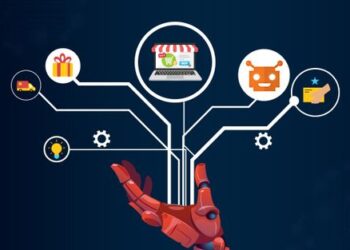In an era marked by ever‑evolving cyberthreats, organizations around the world are turning to artificial intelligence (AI) agents to fortify their digital defenses. Traditional security tools, while still valuable, struggle to keep pace with sophisticated attacks that leverage automation, polymorphism, and zero‑day exploits. AI agents—autonomous software entities powered by machine learning, deep learning, and advanced analytics—offer a proactive, adaptive, and scalable approach to cybersecurity. This article explores how AI agents operate, surveys global examples, examines benefits and challenges, and outlines best practices and future trends for integrating AI agents into comprehensive security strategies.
The Cybersecurity Landscape and Emerging Challenges
Organizations today face a wide array of cyberthreats: ransomware, phishing, distributed denial‑of‑service (DDoS) attacks, insider threats, supply‑chain vulnerabilities, and nation‑state espionage. Key challenges include:
A. Volume and Velocity of Data: Billions of events per day across networks, endpoints, and cloud services overwhelm manual analysis.
B. Advanced Persistent Threats (APTs): Highly targeted campaigns that evade signature‑based detection.
C. Resource Constraints: Limited security staff and budget, leading to alert fatigue and slow incident response.
D. Regulatory Pressure: Compliance with GDPR, HIPAA, PCI DSS, and other regulations demands robust monitoring and reporting.
Against this backdrop, AI agents can ingest massive data streams, identify patterns imperceptible to humans, and act autonomously to contain threats in real time.
What Are AI Agents in Cybersecurity?
AI agents are software constructs that perceive their environment, reason about potential threats, and take actions to mitigate risks without continuous human intervention. They combine several AI disciplines:
A. Machine Learning (ML): Algorithms trained on historical attack data to classify and predict malicious behavior.
B. Deep Learning (DL): Neural networks that analyze complex inputs such as raw network traffic or user behavior logs.
C. Reinforcement Learning (RL): Agents learn optimal defense strategies through trial and error in simulated environments.
D. Natural Language Processing (NLP): Enables analysis of unstructured text like threat intelligence feeds, security reports, and phishing emails.
Together, these capabilities allow AI agents to perform tasks such as anomaly detection, automated response orchestration, and threat intelligence enrichment.
Core Functions of AI Agents
AI agents enhance cybersecurity through several core functions:
A. Proactive Threat Detection: Continuously monitor network traffic, endpoint activity, and user behavior to flag deviations from baseline patterns.
B. Automated Incident Response: Trigger playbooks—such as isolating compromised hosts or blocking malicious IP addresses—within seconds of detection.
C. Threat Intelligence Aggregation: Ingest and correlate data from open‑source intelligence (OSINT), commercial feeds, and dark web monitoring to anticipate emerging threats.
D. Vulnerability Management: Scan code repositories, configurations, and public disclosures to prioritize patching efforts based on exploit likelihood.
E. Risk Scoring and Prioritization: Assign risk scores to assets, users, and vulnerabilities to guide resource allocation and executive reporting.
Global Examples of AI Agents in Action
1. Darktrace (United Kingdom)
Darktrace’s Enterprise Immune System employs unsupervised ML to establish a “pattern of life” for every user and device on a network. When deviations occur—such as a server suddenly communicating with an unknown external host—the AI agent autonomously investigates and, if necessary, applies a “pattern deviation” response that contains the threat without disrupting normal operations.
2. Microsoft Azure Sentinel (Global)
Azure Sentinel integrates AI agents with cloud‑native SIEM (Security Information and Event Management) and SOAR (Security Orchestration, Automation, and Response). Its built‑in ML models detect anomalous login attempts, lateral movement, and suspicious PowerShell commands. Sentinel’s playbooks automate tasks such as user notification, ticket creation, and device quarantine.
3. CrowdStrike Falcon (USA)
CrowdStrike’s Falcon platform uses AI agents deployed on endpoints to monitor process behavior in real time. Its proprietary ML models can identify novel malware families and fileless attacks. When a threat is detected, the agent automatically rolls back malicious changes, preventing data exfiltration and system compromise.
4. NTT (Japan)
NTT’s Cyber Threat Intelligence Center employs AI agents to protect critical infrastructure in sectors such as energy and transportation. Using DL‑based analysis of industrial control system (ICS) telemetry, these agents detect subtle anomalies—like unexpected command sequences to programmable logic controllers (PLCs)—that could indicate sabotage or ransomware targeting operational technology.
5. Tata Consultancy Services (India)
TCS leverages AI agents within its cybersecurity services to serve banking and financial clients. Agents perform real‑time fraud detection on transaction streams, using ML classifiers that adapt to evolving fraud patterns. The system flags suspicious transactions and initiates verification workflows before funds are disbursed.
Benefits of Deploying AI Agents

A. Speed and Scale: AI agents process terabytes of data and execute responses in milliseconds—far faster than human analysts.
B. Continuous Learning: ML models improve over time as they ingest new attack data, reducing false positives and adapting to novel threats.
C. Cost Efficiency: Automating routine monitoring and response tasks allows security teams to focus on strategic initiatives.
D. 24/7 Coverage: AI agents operate nonstop, ensuring no gap in protection—even outside business hours.
E. Contextual Awareness: By correlating disparate data sources, AI agents provide richer context for decision‑making and forensic analysis.
Challenges and Considerations
While AI agents offer compelling advantages, organizations must address several challenges:
A. Data Quality and Bias: Poor‑quality or biased training data can lead to blind spots and false negatives.
B. Adversarial Attacks: Attackers can craft inputs to mislead ML models, known as adversarial examples.
C. Explainability: Black‑box models hinder understanding of why a particular alert was raised, complicating compliance and trust.
D. Integration Complexity: Integrating AI agents with legacy systems, multiple vendors, and diverse data formats requires careful planning.
E. Regulatory Compliance: Automated actions must align with legal requirements, such as data privacy regulations and mandatory breach notification laws.
Best Practices for Successful AI Agent Deployment
A. Start with a Clear Use Case: Focus on high‑impact scenarios—such as insider threat detection or cloud workload protection—to demonstrate value quickly.
B. Ensure High‑Quality Data: Establish robust data pipelines, label historical incidents accurately, and continuously validate model inputs.
C. Implement Human‑in‑the‑Loop: Combine AI recommendations with expert review to refine models and maintain oversight.
D. Prioritize Explainable AI: Use interpretable models or post‑hoc explanation tools to justify alerts and actions to stakeholders.
E. Adopt a Phased Rollout: Begin with monitoring‑only mode, gradually enabling automated responses as confidence grows.
F. Conduct Regular Red‑Team Exercises: Test AI agent resilience against adversarial tactics and refine defenses accordingly.
G. Maintain Continuous Training: Retrain models on fresh data to account for new threat vectors and evolving attacker behavior.
H. Align with Compliance Frameworks: Document AI‑driven processes, preserve audit trails, and integrate with GRC (governance, risk, compliance) platforms.
I. Monitor Performance Metrics: Track detection accuracy, response times, false positive rates, and operational impact.
J. Foster Cross‑Functional Collaboration: Involve IT, security, legal, and business teams to ensure AI agent deployment meets organizational objectives.
Case Study: Financial Sector Implementation

A leading global bank faced a surge in credential‑stuffing attacks against its online banking portal. By deploying AI agents within its web application firewall and authentication infrastructure, the bank achieved:
A. Reduction in Fraud Attempts: A 75% decrease in successful credential‑stuffing attacks within three months.
B. Improved Customer Experience: Legitimate users experienced fewer false rejections due to context‑aware risk scoring.
C. Operational Savings: A 40% reduction in manual fraud investigations and related labor costs.
The AI agents analyzed login velocity, device fingerprinting, and historical user behavior to assign dynamic risk scores. Suspicious logins triggered step‑up authentication or temporary account lockouts, all orchestrated automatically.
Future Trends in AI‑Driven Cybersecurity
A. Multi‑Agent Collaboration: Diverse AI agents—specialized in network traffic, endpoint behavior, and user analytics—will collaborate via secure communication protocols to provide holistic defense.
B. Edge‑Based AI Agents: With the proliferation of IoT devices, lightweight AI agents will run on edge nodes, detecting anomalies locally and reducing latency.
C. Explainable and Ethical AI: Research into transparent AI models will enable regulators and customers to understand security decisions and trust automated systems.
D. Quantum‑Resistant Algorithms: As quantum computing threatens traditional cryptography, AI agents will help identify and deploy quantum‑safe encryption across networks.
E. Integration with Digital Twins: Virtual replicas of IT environments will allow AI agents to simulate attacks and validate defense strategies in risk‑free settings.
F. Adaptive Cyber Deception: AI‑driven honeypots and deception networks will automatically adjust lures and decoys based on attacker tactics.
G. Self‑Healing Systems: Future AI agents may not only detect and contain threats but also automatically remediate vulnerabilities and misconfigurations in real time.
Conclusion
AI agents represent a paradigm shift in cybersecurity, moving from reactive, signature‑based defenses to proactive, intelligent systems capable of outpacing sophisticated adversaries. By leveraging machine learning, deep learning, and autonomous decision‑making, organizations can achieve faster detection, automated response, and continuous adaptation. However, successful deployment requires careful attention to data quality, explainability, integration, and regulatory compliance. As global examples—from Darktrace in the UK to NTT in Japan—demonstrate, AI agents are already transforming security operations. Looking ahead, advances in multi‑agent collaboration, edge computing, and explainable AI promise even greater resilience against the cyberthreats of tomorrow.







